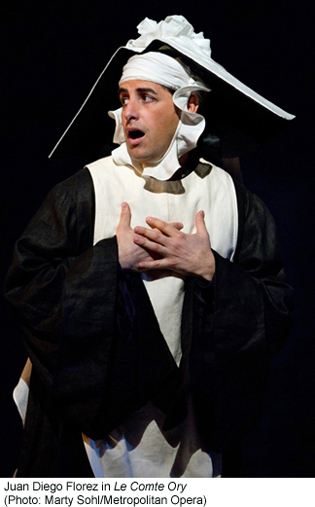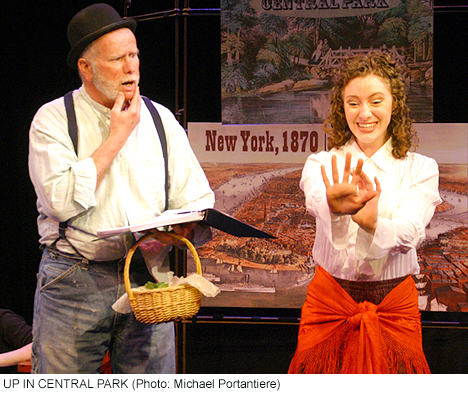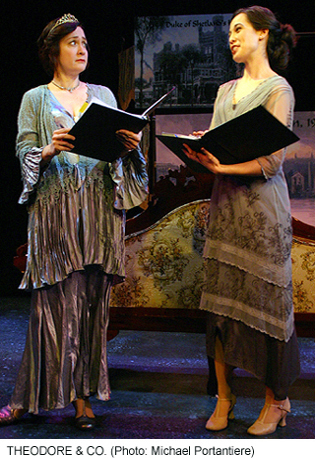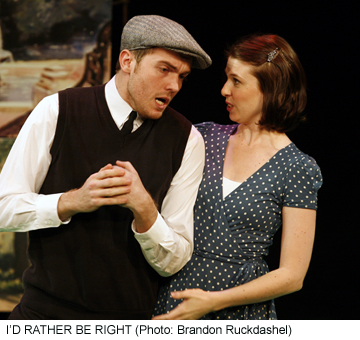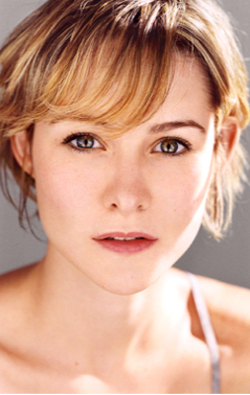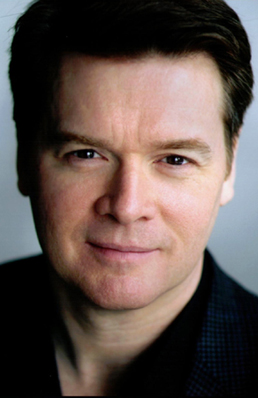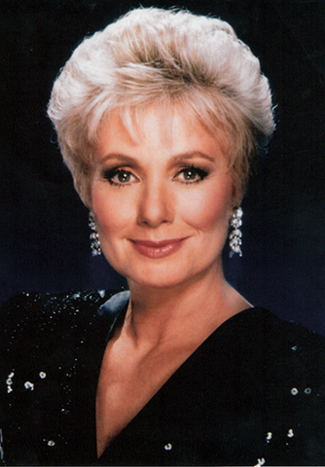
What a career! As a teenager, Shirley Jones was taken under the wing of Rodgers and Hammerstein, no less, and ended up starring in the film versions of their musicals Oklahoma! and Carousel when she was still barely legal. In 1960, she did a complete turnaround, playing a prostitute in Elmer Gantry and winning an Academy Award for her efforts. Her next plum movie role was Marian the Librarian in The Music Man, one of the best-ever stage-to-film transfers.
She's also super-famous as the widowed mom to a brood of pop star kids in the beloved '70s TV series The Partridge Family. That role hit very close to home for Jones, as she's the real-life mother of one pop star (Sean Cassidy) and step-mom of another (David Cassidy, her Partridge Family co-star). Both of those teen idols were the sons of her first husband, actor/singer Jack Cassidy, with whom she also gave birth to actor Patrick Cassidy.
Rather than relaxing in her golden years, Jones is still out there doing it. She released two recordings in 2010, one a Christmas album, the other a tribute to Richard Rodgers. In late April-early May, she'll introduce a screening of Carousel as part of the TCM Classic Film Festival in Hollywood. And right now, she's preparing for her NYC nightclub debut at Feinstein's at Loews Regency, March 15-19. I recently spoke with the lady about her amazing achievements in film, television, and theater.
********************
BROADWAYSTARS: I've heard some cuts from your Richard Rodgers album. Great stuff, and very sultry.
SHIRLEY JONES: Thanks. It's easier for me to sing low now, and it's fun, because it isn't something I've done a lot of. It's what I'll be doing at Feinstein's, too. I can still sing high notes, and I can sing low, but going up and down the range isn't so easy anymore.
STARS: You mean, you have some difficulty in the passaggio.
SHIRLEY JONES: That's right. And it happens to sopranos more than any other type of voice.
STARS: Tell me about the program for your show at Feinstein's.
SJ: It's mostly a Rodgers and Hart evening, but I'll be doing songs from my movies, too. It will be a combination of story and song. I have stories to tell about each film...
STARS: I'm sure you do!
SJ: Yes, I could go on forever.
STARS: I've always wondered about Frank Sinatra quitting Carousel because he was told they'd have to film the movie twice, once for Cinemascope 55 and again for standard Cinemascope. How much did you work with him before he left?
SJ: Quite a lot. The preparation for a film musical starts way ahead, and Frank and I worked together for two or three months. We did all of the pre-recordings and the costume fittings. Then he got to the set in Boothbay Harbor [in Maine] and found out about the double filming. He said "I signed to do one movie, not two," and he got back in the car and went back to the airport.
STARS: The pre-recordings with him have never been released, but they must still exist.
SJ: They've got to. Everybody asks me about that. I even talked to Nancy Sinatra, and she doesn't know where they are.
STARS: I'll bet you'd love to have those.
SJ: Yes, I would. That's for sure. Over the years, I would see Frank at parties or wherever, and I'd ask him why he left the picture. He'd say, "Shirley, I don't want to talk about it!" But just a few months ago, I was doing an interview and the reporter said, "Don't you know the real reason why Sinatra dropped out of Carousel?" I said, "I guess not! I've never heard any other reason, but I assumed there must be something else." And the reporter said, "Ava Gardner was filming another movie on location, and she told him, 'Get your ass down here or I'm leaving you.'"
STARS: I've always guessed the real reason was that maybe he realized he was miscast.
SJ: Frank didn't feel that at all, trust me. He said, "This is a once-in-a-lifetime chance for a singer to play this part." I do think it probably had something to do with Ava, because he always claimed she was the love of his life.
STARS: Well, whether or not it's true, that's a much more interesting story! The irony is that they didn't wind up having to film Carousel twice, because they figured out how to reduce the film image from 55 millimeter to standard Cinemascope. But Oklahoma! was definitely filmed twice, for Todd-AO and for Cinemascope, and both versions are now on DVD in one package. Do you have a preference for one over the other?
SJ: No, I never really thought about it. I just thought the movie was so beautifully done. In widescreen, you got to see more of everything. That was a real house down in Nogales, Arizona. And the corn was real. In that movie, everything was real.
STARS: Speaking of which: In the Cinemascope version, there's a butterfly or a moth that flies around in frame while Gordon MacRae is singing "The Surrey With the Fringe on Top" to you. In a way, it's a mild distraction, but in another way, it really adds to the scene.
SJ: Oh, I know! I remember that really well.
STARS: So, what was it like to be sung to by Gordon MacRae?
SJ: I loved him so. He had one of the most beautiful voices of all time.
STARS: Did you have any trouble lip-synching to your own tracks while filming? I imagine it's rather difficult
SJ: No, it came naturally. But I would think anyone would have trouble synching to another voice. That can't be easy.
STARS: You made your Broadway debut in the chorus of South Pacific, but you weren't in the original cast, were you?
SJ: No, I joined the company for the last six months of the run. Mary Martin and Ezio Pinza were no longer in it, but it was an incredible experience. I was 18 years old! Then I did Me and Juliet in Chicago. And then I went right into the movie of Oklahoma!
STARS: You've played many R&H roles in stock, yes?
SJ: I've done all of them, except Nellie in South Pacific. I did The King and I and The Sound of Music several times.
STARS: I remember reading that you were mentioned as possible casting for the movie of The Sound of Music. How far did you get with that?
SJ: Not very. I didn't audition or test or anything. I think Julie was the one they really wanted.
STARS: Can you talk a little bit about Maggie Flynn, the musical that you and your husband Jack Cassidy did on Broadway in 1968?
SJ: I was really disappointed that it wasn't a hit, because it was a wonderful show. It came at the wrong time; it was very old-fashioned, and at that time they were starting to do things like Hair. Jack was incredible in it. He sang so beautifully.
STARS: You didn't return to Broadway until 2004, when you did 42nd Street with your son Patrick.
SJ: That's right. I had great trepidation about going back to do a Broadway show at age 70, but Patrick talked me into it. He said, "Come on, mom, we'll have a great time!" After the first few performances, I thought, "Wow, now I remember what it's like to be in a show."
STARS: You and Jack made a couple of studio albums that are now on CD, and that recording of Brigadoon, which I love.
SJ: Thank you, I love it too. The music is so beautiful. I never got to do that part on stage, but I loved recording it with Jack. He was such a wonderful performer, and he taught me a lot about singing. Every party we would go to, he'd get up and sing. We had an act that played Las Vegas twice and toured the country. It was called "The Marriage Band." We had singers and dancers and sets -- the whole thing.
STARS: How did you two meet?
SJ: I was under contract to Rodgers and Hammerstein. I was the one and only, first and last performer to be under contract to them. After the film of Oklahoma!, they sent a stage production of the show to Europe on sort of a goodwill tour. The original director, Rouben Mamoulian, directed it. And that's how I met Jack. He was my leading man.
STARS: By the way, did you ever do The Music Man on stage?
SJ: Yes -- as Mrs. Paroo! Patrick and I have done it several places, with him as Harold Hill and me as Mrs. Paroo. In fact, we've done a few shows with him playing the male lead and me playing the old lady.
STARS: You don't live in New York, so you may not be aware that there's a new TV station here called "Antenna" and The Partridge Family is one of its staples. As I recall, the P.R. for the show claimed that you sang along with David [Cassidy] and the session singers who recorded the Partridge Family songs, but I was always skeptical about that. Are you really singing on "I Think I Love You" and all those other recordings?
SJ: Yes! I didn't do much, as you know. I was a background singer. In all that time, I only had two solos.
STARS: I remember that, in the first few episodes of the series, they didn't use David's real voice.
SJ: That's right, they had no idea what they had. They'd hired David because they thought he was the right type and he could play the guitar.
STARS: Both David and Sean Cassidy achieved an enormous amount of fame back in the day.
SJ: Yes. David, I'm told, was the number one rock star in the world at one point -- bigger than the Beatles. I tried to get Sean not to do it; I wanted him to go to college. But he said, 'If David can do it, so can I!"
STARS: Well, I'm looking forward to hearing lots more stories and beautiful songs in your show at Feinstein's. What are some of your favorites that you'll be singing?
SJ: I love "Where or When" and "Blue Moon." I have some great new charts by Ron Abel, who's played Feinstein's many times. You know, I've never really done the so-called nightclub circuit; most of the time I'm in big halls with symphony orchestras. This is a first, and I love the idea. It's going to be great fun.
